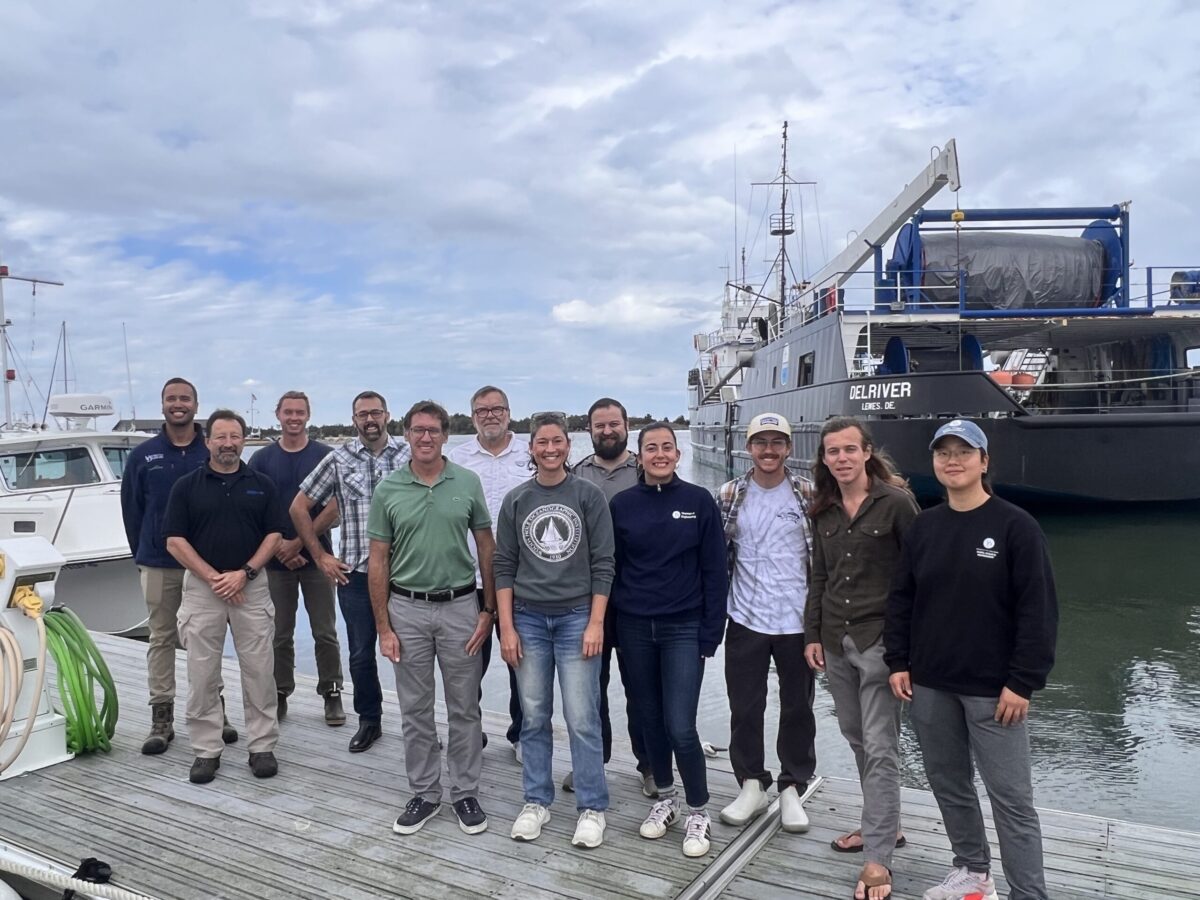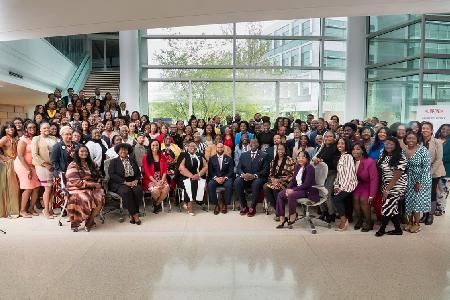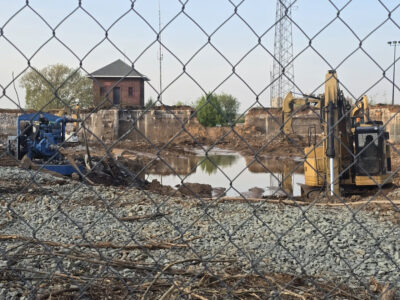The University of Delaware’s big bet on blue tech is going strong after its first year, with a new simulation partnership and advances in workforce development.
Project ABLE is a two-year, $1.3 million UD project aimed at advancing the state’s blue tech economy. The initiative, funded by the National Oceanic and Atmospheric Administration and based at UD’s College of Earth, Ocean and Environment in Lewes, aims to help create jobs and workforce training in ocean-related (“blue”) technology. That field includes fields related to high-tech vessels and wind farms.
One of Project ABLE’s mandates is to spread the word that blue tech in Delaware — the robotic vessels, the turbines, the simulations — is not only happening but also becoming an economic force in a part of the state more commonly associated with tourism and agriculture.

A team working on blue tech at UD. (Courtesy UD)
“What’s really exciting this year is I think we’ve kind of reached a critical mass of words out about blue tech and Delaware,” said Art Trembanis, UD professor and deputy director at the Center for Autonomous and Robotic Systems, a UD research collaborative focused on using robotics and AI to for ecological purposes. “We’d always had a lot going on over the years, but it had been kind of a well-kept secret locally. But at the city level, state level … And now the game is coming to us. We had a meeting just last week with a company that reached out to us from Norway.”
Digital twins
Project ABLE’s latest partnership is with the Canadian firm GRi Simulations. The company develops digital simulations of remote underwater vessels, called digital twins, that allow them to realistically test watercraft and procedures before launching the actual thing.
“We work with [GRi Simulations] to create a digital version of a section off the coast of Delaware with actual objects that are at the bottom of the sea floor,” Rob Nicholson, a UD-affiliated scientist and Project ABLE leader, told Technical.ly.
One area they’ve simulated is Redbird Reef, an artificial reef constructed out of retired New York City subway cars off the Delaware coast. The reef, a habitat for local fish and other marine life, could be maintained by marine robots, and the simulation shows what that would look like.
“GRi Sim showcased some of the robots that we have [at UD],” Nicholson said, “showcasing the capability of them cruising around and doing inspection of the trolley cars, and looking at simulated offshore wind infrastructure, to really showcase the power of some of the technologies that we have here at the Lewis campus, whether it’s for artificial reef or for offshore wind applications.”
You can watch the full demonstration below; start at 22:40 to go directly to the Redbird Reef simulation.
A fully integrated digital twin system would have operators experiencing the real-time conditions out in the field.
“Let’s say you have a weather sensor on the Indian River Bridge. Let’s say you have a buoy off the coast that’s collecting oceanographic data. And then, let’s say you have a lighthouse that can give you a sense [of] what the weather conditions are from a visibility standpoint,” Nicholson said. “This data is fed into the digital twin, and it’s updated on a near real-time basis.”
“So if you’re interacting with this digital twin and the digital twin is dynamic, meaning it’s getting real live data inputs from the field, then the digital environment also updates,” Nicholson added. “So if you’re, if you’re operating one of these platforms, and you’re cruising off the coast of Delaware, and all of a sudden there’s a large wind gust or maybe there’s an increase in the currents, as an operator in the simulation, you’re going to feel those environmental changes as well.”
Blue workforce and pipeline development
Right now, Project ABLE is focusing on its partnership capabilities by building awareness of the tech. Eventually, technology like GRi Sim’s digital twins may be used for workforce development.
“We do have some plans and some ideas that we’re looking for funding for to basically create a simulation room that would be utilized for more formalized workforce development, training and some type of credentialing program,” Nicholson said. “For example, it could be something along the lines of maritime technology operator or autonomous systems operator, where the individual would go through the training and walk out with some type of industry standards certification.”
In August, Project ABLE will host an autonomous systems bootcamp at the Lewes campus.
“I call it nerd summer camp,” Trembanis said. “We’ll hear from like a dozen institutions, 11 different countries, and this year, we’re going to be directing it towards offshore wind.”
“It’s going to be an opportunity to bring together people across the world and the region, whether you’re academic or industry or other, to come together and really work with some of these new technologies — whether they’re platform sensors or softwares— in a mission-driven collaborative nature, and have the ability to deploy them and really push the envelope of innovation,” said Nicholson.
Join the conversation!
Find news, events, jobs and people who share your interests on Technical.ly's open community Slack

Delaware daily roundup: 20+ things to do in May; Technical.ly's Dev Conference; Dupont earnings

Delaware daily roundup: DE innovation leaders; High schoolers win STEM competition; New Ladybug Fest location

Delaware daily roundup: Greentech digital glowups; AI versus dev jobs; New Biggs Museum website



